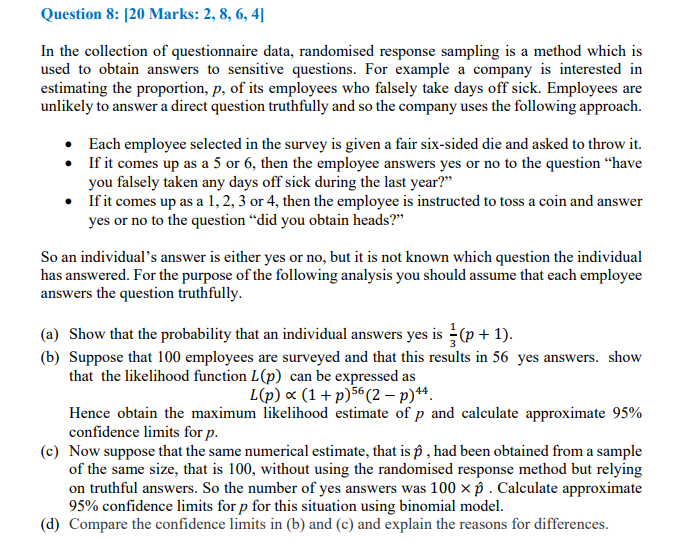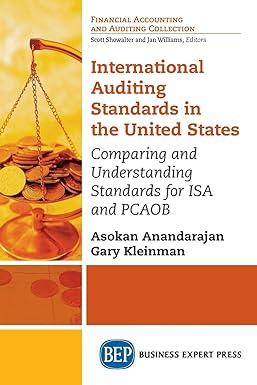
Question 8: [20 Marks: 2, 8, 6, 4] In the collection of questionnaire data, randomised response sampling is a method which is used to obtain answers to sensitive questions. For example a company is interested in estimating the proportion, p, of its employees who falsely take days off sick. Employees are unlikely to answer a direct question truthfully and so the company uses the following approach. Each employee selected in the survey is given a fair six-sided die and asked to throw it. If it comes up as a 5 or 6, then the employee answers yes or no to the question "have you falsely taken any days off sick during the last year? If it comes up as a 1, 2, 3 or 4, then the employee is instructed to toss a coin and answer yes or no to the question "did you obtain heads?" So an individual's answer is either yes or no, but it is not known which question the individual has answered. For the purpose of the following analysis you should assume that each employee answers the question truthfully. (a) Show that the probability that an individual answers yes is (p + 1). (b) Suppose that 100 employees are surveyed and that this results in 56 yes answers. show that the likelihood function L(p) can be expressed as L(p) (1 +p)56 (2 p)44. Hence obtain the maximum likelihood estimate of p and calculate approximate 95% confidence limits for p. (c) Now suppose that the same numerical estimate, that is p, had been obtained from a sample of the same size, that is 100, without using the randomised response method but relying on truthful answers. So the number of yes answers was 100 x . Calculate approximate 95% confidence limits for p for this situation using binomial model. (d) Compare the confidence limits in (b) and (c) and explain the reasons for differences. Question 8: [20 Marks: 2, 8, 6, 4] In the collection of questionnaire data, randomised response sampling is a method which is used to obtain answers to sensitive questions. For example a company is interested in estimating the proportion, p, of its employees who falsely take days off sick. Employees are unlikely to answer a direct question truthfully and so the company uses the following approach. Each employee selected in the survey is given a fair six-sided die and asked to throw it. If it comes up as a 5 or 6, then the employee answers yes or no to the question "have you falsely taken any days off sick during the last year? If it comes up as a 1, 2, 3 or 4, then the employee is instructed to toss a coin and answer yes or no to the question "did you obtain heads?" So an individual's answer is either yes or no, but it is not known which question the individual has answered. For the purpose of the following analysis you should assume that each employee answers the question truthfully. (a) Show that the probability that an individual answers yes is (p + 1). (b) Suppose that 100 employees are surveyed and that this results in 56 yes answers. show that the likelihood function L(p) can be expressed as L(p) (1 +p)56 (2 p)44. Hence obtain the maximum likelihood estimate of p and calculate approximate 95% confidence limits for p. (c) Now suppose that the same numerical estimate, that is p, had been obtained from a sample of the same size, that is 100, without using the randomised response method but relying on truthful answers. So the number of yes answers was 100 x . Calculate approximate 95% confidence limits for p for this situation using binomial model. (d) Compare the confidence limits in (b) and (c) and explain the reasons for differences







